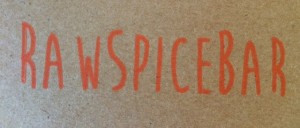Cinnamon
Cinnamon bites and kisses simultaneously. -Vanna Banta
The Basics
The name cinnamon ought be renamed “the cinnamons.” Here’s why. The familiar warm, brown, powdery spice we call cinnamon can have its origins in one of several similar species.
True cinnamon (Cinnamonum verum) is the delicate bark harvested from a small evergreen tree belonging to the Laurel family (spicebush, bay laurel, sassafras and avocados are also members of this aromatic family of trees). True cinnamon is native to Sri Lanka. There are species similar to true cinnamon and similar spices are derived from them such as cassia and cinnamomum burmanni. These similar spices are obtained from the bark and ground into powder and also called cinnamon. Confusing, isn’t it?
It doesn’t have to be. True cinnamon is referred to as Ceylon cinnamon and cassia is called Chinese cinnamon. Today, Ceylon cinnamon is produced in Sri Lanka, India, Madagascar, Brazil and the Caribbean, while cassia is mainly produced in China, Vietnam and Indonesia.
Which should you use? Depends on what you’re cooking…and your budget. Ceylon cinnamon has sweeter, more refined taste with a greater concentration of oils. It’s also more difficult to find and you will have to seek out specialty spice shops. Cassia is more widely available and usually what’s stocked at your local grocery store.
The Form
Cinnamon bark is rolled up into tubes called quills. That term is for those in-the-know. Most people, like you and I, simply refer to them as cinnamon sticks. True cinnamon is fragile and can be easily crushed with your fingers. Cassia is a thicker bark.
Cinnamon is available as quills or ground up as a powder.
The Flavor
Cinnamon has a natural warmth to it and sweet aroma. Ceylon cinnamon is sweet and more delicate in aroma and texture than cassia. Storage: keep cinnamon in a tightly sealed glass container preferably in a cool, dark and dry place. The refrigerator will help extend cinnamon’s freshness. If it no longer smells sweet, it’s stale and should be tossed.
The Story
As one of the oldest spices cinnamon’s history is rich and lively. The ancient Egyptians valued it for its medicinal uses and as a flavoring for beverages. They also took advantage of its anti-microbial properties and used it as an embalming agent. Cinnamon was also a highly-prized commodity traded between the Near East and Europe in the 15th-17th centuries. Cinnamon, along with nutmeg, mace and pepper, fueled the Age of Exploration and later, the great spice race as more European countries sought new passages to the spice-producing regions of the world.
Health Benefits
There are many claims and reports on the health benefits of cinnamon. One of it’s biggest claims are its anti-microbial properties. It’s often used as a food preservative (hey, the Egyptians used to preserve their mummies). Cinnamon has also been effective with blood sugar control and studies have shown that its scent can boost brain function.
References:
The World’s Healthiest Foods. http://www.whfoods.com/genpage.php?tname=foodspice&dbid=68
Wikipedia: http://en.wikipedia.org/wiki/Cinnamon
Try It!
Mexican Cocoa Mix: Ingredients: 1 cup packed light brown sugar; 1 cup cocoa powder; 1/2 cup nonfat dry powdered milk; 1/2 cup plain nondairy powdered creamer (non lowfat); 1 tab (approx. 3 1/4 oz.) *Mexican chocolate, grated or finally chopped; 1 tablespoon ground cinnamon, 1 teaspoon chili powder (optional); 2 teaspoons kosher salt; 12 cinnamon sticks for garnish (cassia is fine).
What to do: Combine brown sugar, cocal powder, powdered milk, powdered creamer, chocolate, cinnamon, chili powder and salt in a large bowl. For a single serving, scoop about 2-3 tablespoons (adjust for richness) of the mixinto a mug and pour 1 cup boiling water over it. Stir until chocolate has melted and the mixture is smooth. Garnish with a cinnamon stick serve immediately. Makes 12 servings.




